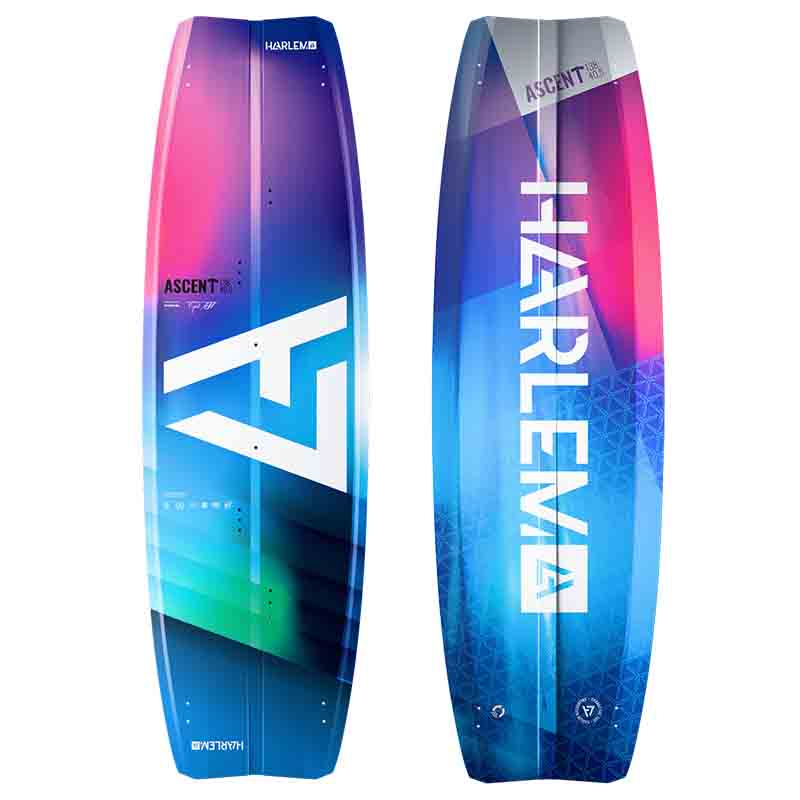When you purchase gear through links on our site, we may earn a small commission. Here’s why you can trust our tests and our affiliate partner.

Recently, we had the chance to review the Harlem Peak kite, but we were chuffed to also receive the Harlem Ascent twintip – their flagship Big Air/freeride board – at the same time for testing.
Right from the unboxing, we noticed plenty of refined details, such as the double concave, central channel and overall sleek shape. Visually, it was clear that this board had been thoughtfully and meticulously designed.
Our first task was setting it up. The footstraps offer multiple mounting options, allowing for various strap positions and pad angles to match your personal preference. The fins come mounted at a slight angle, which gave us an early indication of the board’s intended riding style. Once fully assembled, the board felt light, thanks to its carbon and fiberglass construction combined with lightweight footstraps.
Before writing this review, we had the chance to put in plenty of sessions on the Harlem Ascent, and a few key features stood out. The first, and most obvious from the very first tack, is its incredible grip. Once you’re locked in riding upwind, the board holds its edge effortlessly while slicing through chop, making for an exceptionally smooth and comfortable ride. A big part of this performance comes from the seamless integration between the board’s construction and its footstraps, which work together to dampen vibrations. Even in the roughest conditions, this combo kept the ride stable and far more comfortable than expected.
That same grip translates directly into performance. It allows for explosive vertical pops, and you never lose the edge, even when loading up for jumps at high speed. This made our Big Air sessions especially enjoyable. The consistent edge hold also makes it easier to find and extend the sweet spot for takeoffs, something that riders progressing their jump technique will truly appreciate. Another standout feature is the board’s forgiving landings. Thanks to its smart shaping, well-engineered construction, and maybe a touch of witchcraft, even slightly off landings, especially those lacking horizontal speed, felt smooth. The board seems to convert impact into forward motion, helping you ride out of landings more easily.
The Ascent is available in two board sizes (135 and 138) and two footstrap sizes, making it adaptable for a wide range of riders. Whether you’re a full-on Big Air enthusiast or a freerider just out to enjoy whatever conditions the day brings, the Ascent is built to deliver and put a smile on your face.
